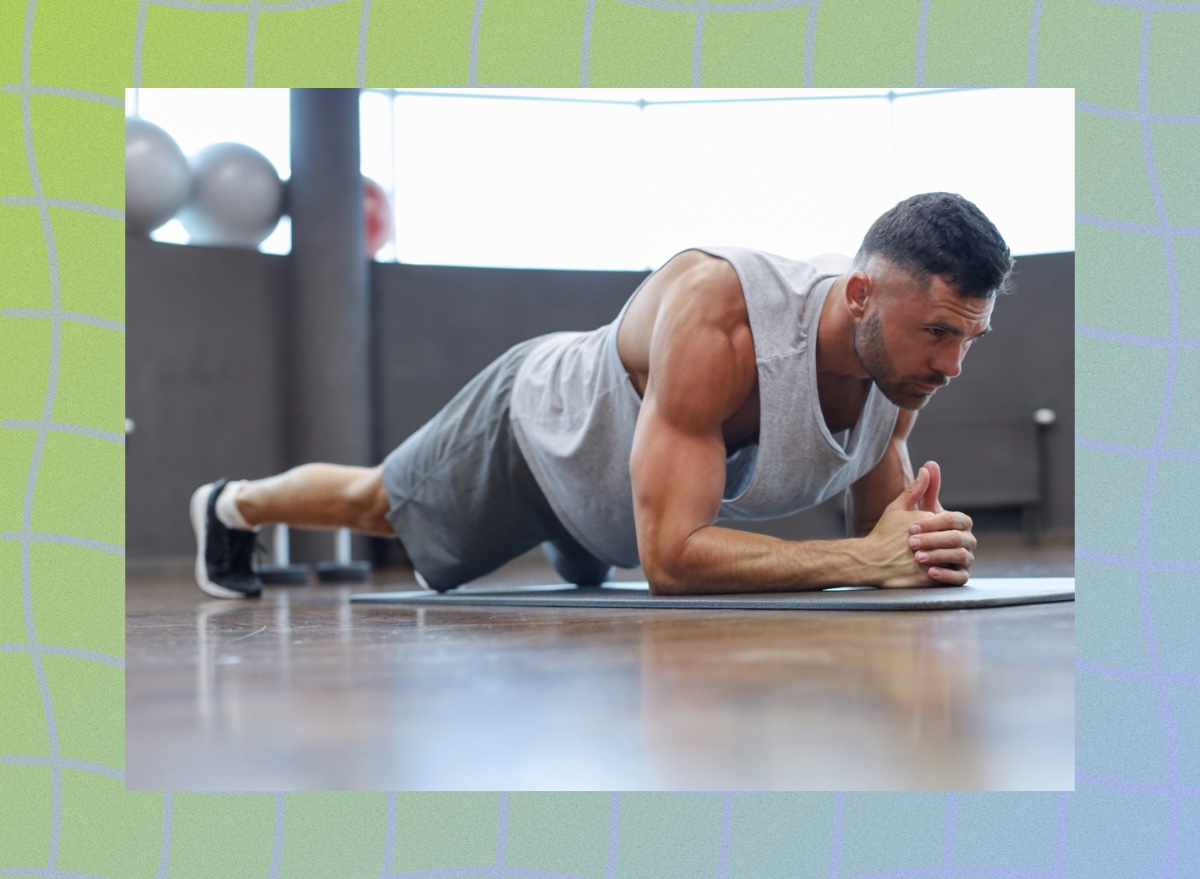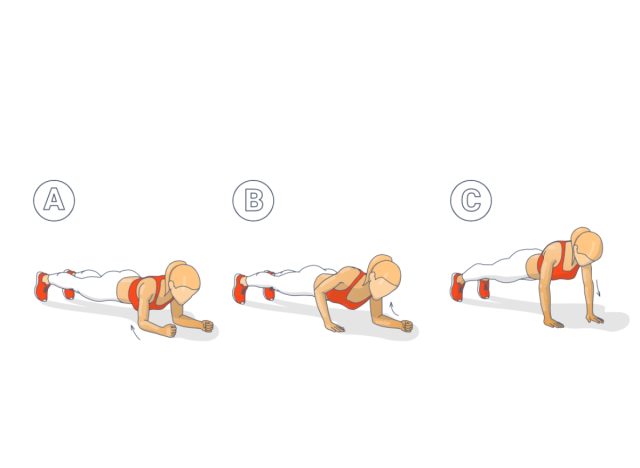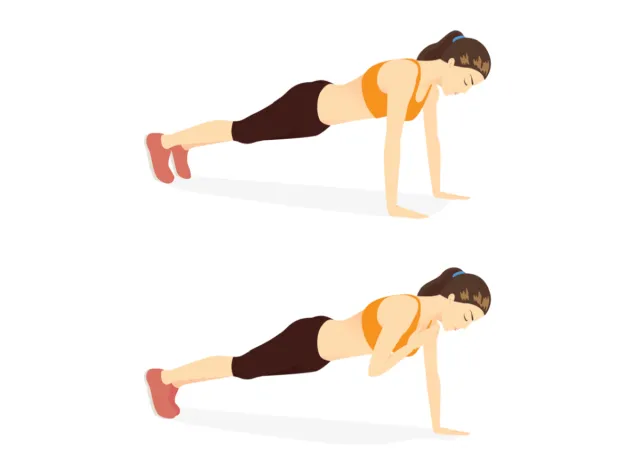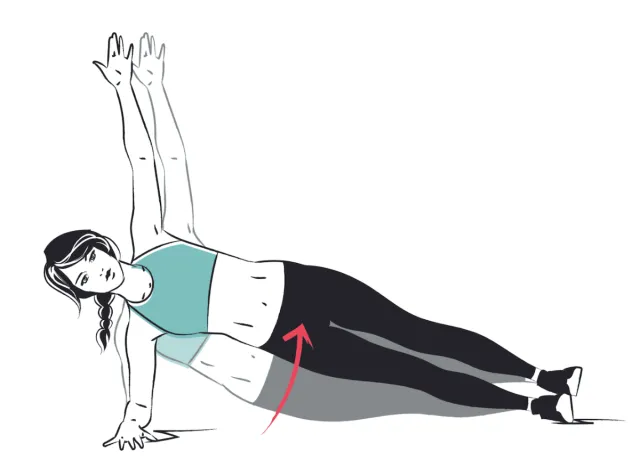If You Can Do These 8 Core Exercises, Your Abs Are Stronger Than Most

Strong abs aren't just about aesthetics—they're the foundation of almost everything you do, from crushing a deadlift to simply carrying groceries without straining your back. A powerful core stabilizes your body, protects your spine, and improves your overall athleticism. If you've ever underestimated the importance of core strength, it's time to rethink your priorities because your abs are the unsung heroes of functional fitness. I've curated a list of the eight best exercises to test your ab strength so you know where you stand.
This isn't your typical roundup of crunches and sit-ups. These eight exercises push your core to its limits, testing its ability to brace, stabilize, and resist movement under dynamic conditions. You'll discover how strong your abs are, from anti-rotation challenges to weighted planks. These moves don't just build strength—they improve balance, coordination, and endurance, helping you level up in the gym and beyond.
By the end of this, you'll have the tools to build a core that can handle anything life throws at you—and maybe even a six-pack to match.
The Exercises
- Exercise #1: Plank Up-Downs
- Exercise #2: Plank with Shoulder Taps
- Exercise #3: Reverse Crunch
- Exercise #4: Weighted Forearm Plank
- Exercise #5: Weighted Side Plank
- Exercise #6: Side Plank with Hip Dips
- Exercise #7: Pallof Press
- Exercise #8: Heavy Farmer Carries
Exercise #1: Plank Up-Downs

Why: This isn't your ordinary plank! Plank up-downs take the classic core move and add a dynamic twist. You are working your abs to stay braced and engaging your shoulders and hips to move up and down without losing your form. The real challenge? Fighting against rotation as you transition between positions. This exercise is all about body control, strength, and stability. Plus, it's a sneaky way to increase your heart rate while building bulletproof core endurance.
How To Do It:
- Start in a high plank position with your hands directly under your shoulders and your body in a straight line from head to heels.
- Lower your right forearm to the ground, then your left, transitioning into a forearm plank.
- Push back up to the high plank one arm at a time, starting with your right hand and then your left.
- Keep your hips level throughout the movement to avoid excessive twisting.
- Alternate which arm leads the motion to ensure balanced strength.
Recommended Sets and Reps: 3 sets of 10–12 repetitions (5–6 per side).
Exercise #2: Plank with Shoulder Taps

Why: Plank with shoulder taps are sneaky but incredibly effective. Lifting one hand to tap the opposite shoulder forces your core to engage in overdrive, resisting the natural urge to twist or wobble. It's all about control, challenging your torso to stay rock-solid no matter what. Your shoulders get some love, too, as they stabilize you through each tap. If you've mastered the standard plank, this move is a must-try to crank up the intensity.
How To Do It:
- Begin in a high plank with your hands under your shoulders and your body in a straight line.
- Slowly lift your right hand to tap your left shoulder without shifting your hips.
- Return your right hand to the ground and repeat on the other side.
- Move slowly and deliberately to maintain control and maximize core engagement.
Recommended Sets and Reps: 3 sets of 8–12 taps per side.
Exercise #3: Reverse Crunch
Why: Reverse crunches are one of those moves that look simple but pack a serious punch. They hone in on your lower abs, an area that's notoriously hard to target. The trick is in the tempo—slow and controlled wins the race here. Instead of just dropping your hips back down after lifting them, focus on engaging your core to control the descent. This move forces your abs to work through the full range of motion, giving you that deep burn that lets you know it's working.
How To Do It:
- Lie on your back with your hands at your sides and legs bent at 90 degrees.
- Use your abs to curl your hips off the ground, bringing your knees toward your chest.
- Slowly lower your hips back down, resisting gravity to maintain control.
- Avoid using momentum—focus on engaging your abs throughout the movement.
Recommended Sets and Reps: 3 sets of 12–15 repetitions.
Exercise #4: Weighted Forearm Plank
Why: Adding weight to a plank might sound simple, but trust me—it's a whole new ballgame. With extra resistance pressing down on your back, every muscle in your core has to work harder to hold the line. It's not just physical—it's mental, too. Can you stay locked in and braced, even when the weight makes you feel like crumbling? This move takes the humble plank into a test of grit and strength.
How To Do It:
- Start in a forearm plank with your elbows under your shoulders and your body in a straight line.
- Have a partner place a weight plate on your mid-back (or use a weighted vest).
- Maintain a rigid, braced position without letting your hips sag or rise.
- Hold for the prescribed time, focusing on deep, controlled breathing.
Recommended Sets and Reps: 3 holds of 30–60 seconds.
Exercise #5: Weighted Side Plank
Why: Sure, six-pack abs get all the attention, but what about your obliques and the rest of your lateral core? Neglecting these muscles is like leaving a tire half-inflated—it just won't hold up. The weighted side plank challenges those often-overlooked areas while testing your ability to stay stable under pressure. Keep your hips high and avoid sagging to ensure you're firing up the right muscles. If you can hold this one steady, your core strength is next level.
How To Do It:
- Lie on your side with your elbow under your shoulder and your legs stacked.
- Lift your hips off the ground into a side plank, forming a straight line from head to heels.
- Hold a dumbbell or place a weight plate on your top hip for added resistance.
- Keep your hips lifted and your body aligned.
Recommended Sets and Reps: 3 holds per side of 20–40 seconds.
Exercise #6: Side Plank with Hip Dips

Why: Most core workouts focus on bracing and stability, but endurance is just as important. That's where side plank hip dips come in. This move combines alignment, strength, and a little extra spice with the dipping motion, which stretches and strengthens your obliques in one go. High-rep sets are a mental and physical challenge, but the payoff is worth it. Bonus: Your lateral core muscles will light up like never before.
How To Do It:
- Begin in a side plank with your elbow under your shoulder and your hips lifted.
- Slowly lower your hips toward the ground without touching it, then lift back to the starting position.
- Maintain alignment through your head, shoulders, and hips throughout the movement.
Recommended Sets and Reps: 3 sets of 12–15 dips per side.
Exercise #7: Pallof Press
Why: Anti-rotation exercises like the Pallof press are criminally underrated. Your core isn't just about crunching—it's about resisting movement, whether from lifting, running, or life's random twists and turns. The Pallof press teaches your core to stay solid against rotational forces, engaging everything from deep stabilizers to rectus abdominis. It's a full-body burner that will work your abs, shoulders, and glutes.
How To Do It:
- Attach a resistance band to a sturdy anchor at chest height.
- Stand sideways to the anchor and hold the band handle with both hands at your chest.
- Step away from the anchor to create tension in the band.
- Press the band straight out before you, resisting the pull back toward the anchor.
- Hold for a moment, then slowly return your hands to your chest.
Recommended Sets and Reps: 3 sets of 10–12 presses per side.
Exercise #8: Heavy Farmer Carries
Why: If you want to know what functional fitness feels like, pick up something heavy and walk with it. Farmer carries are the ultimate test of total-body strength and core stability. Your abs, glutes, and lower back must work together to keep you upright and controlled. The key is to resist the temptation to hunch or tilt—stay tall, stay tight, and let your core do the work. This strength carries over into real life, from hauling groceries to crushing workouts.
How To Do It:
- Grab a heavy dumbbell or kettlebell in each hand and stand tall with your shoulders back.
- Walk forward with small, controlled steps, keeping your torso upright and your core braced.
- Avoid letting the weights pull your shoulders down or your torso lean.
Recommended Sets and Reps: 3 sets of 40–60 seconds of walking.









